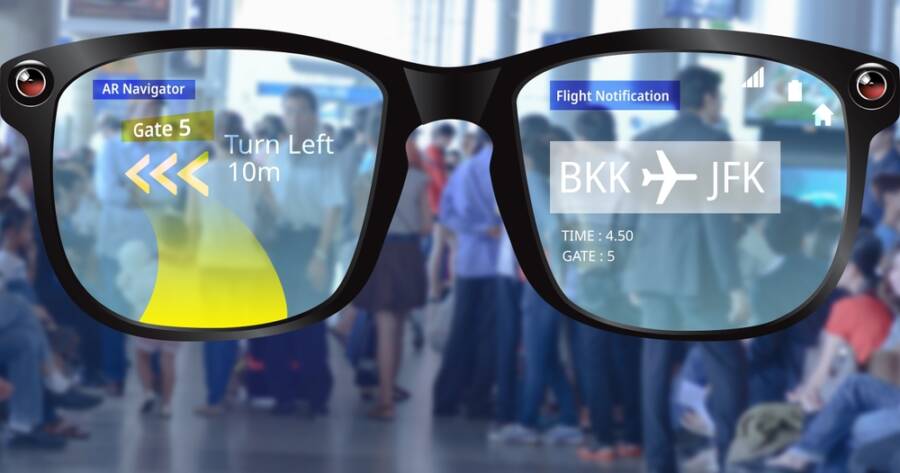Augmented Reality (AR) is transforming the way we interact with the world, seamlessly blending digital enhancements into our physical environment. By overlaying digital information on real-world settings, AR offers innovative solutions to everyday challenges, from retail and education to healthcare and navigation. As technology advances, AR’s applications continue to expand, promising to enhance daily life in engaging and practical ways. Explore the multifaceted impact of AR by uncovering how this technology is reshaping industries and solving common problems with digital precision.
Revolutionizing Retail Experiences
In the retail sector, AR is redefining the shopping experience by providing customers with interactive, immersive opportunities to engage with products before making a purchase. AR applications allow users to visualize how furniture might look in their homes or how clothing might fit without needing a physical trial.
Brands like IKEA and home improvement stores offer AR apps that let customers visualize how furniture or paint colors will look in their actual rooms, reducing the uncertainty and potential regret associated with purchases. Similarly, fashion retailers use AR to create virtual fitting rooms, enabling customers to try on clothes virtually, enhancing convenience and reducing return rates.
By offering customers a personalized and interactive shopping experience, AR enhances satisfaction and encourages higher engagement, helping retailers bridge the gap between online convenience and in-store interaction.
Transforming Education and Training
In education, AR is enriching learning experiences by offering interactive and engaging content that brings complex concepts to life. Students can explore historical sites in 3D, dissect virtual frogs without harming real animals, or visualize scientific phenomena that would otherwise require expensive or dangerous equipment.
These immersive experiences foster deeper understanding and retention, catering to diverse learning styles and making education more accessible. AR applications in training environments offer simulated scenarios where trainees can practice skills safely and confidently, from medical procedures to mechanical repairs.
By bridging the gap between theory and practice, AR facilitates experiential learning, empowering students and professionals to engage with content dynamically and responsively.
Enhancing Healthcare Experiences
In healthcare, AR is beginning to prove its value by improving patient outcomes and enhancing the accuracy of medical procedures. Surgeons use AR technology to overlay critical information, such as vascular maps, directly onto a patient’s body, enhancing precision during operations.
For patients suffering from phobias or PTSD, AR provides controlled exposure therapy environments where they can confront fears with the support of clinical guidance. AR applications can guide patients through physical therapy exercises, ensuring correct form and positioning to aid recovery.
AR enables medical professionals to access real-time data and models, augmenting their decision-making capabilities and potentially reducing risks associated with surgical procedures. By enhancing visualization and interaction, AR technologies contribute to more efficient, patient-centered care.
Innovating Navigation and Exploration
Navigation is another area where AR has shown remarkable potential, offering intuitive solutions that enhance how people navigate both familiar and unfamiliar environments. AR navigation apps overlay directional cues and informative graphics onto the physical world when viewed through a smartphone.
For pedestrians or tourists, AR navigation provides a more engaging way to explore cities, highlighting points of interest, restaurants, and shops with interactive digital markers. Apps can provide real-time language translations for signs or menus, simplifying travel in foreign countries and enhancing cultural immersion.
By transforming how individuals interact with and explore their surroundings, AR enriches the travel and navigation experience, offering more than just directions—providing a contextual and informative journey.
Redefining Entertainment and Gaming
The entertainment and gaming industries have been quick to embrace AR’s immersive potential, creating experiences that engage audiences in new and captivating ways. AR games like Pokémon GO have demonstrated the technology’s ability to merge the virtual with the real, encouraging players to explore their environments while capturing digital creatures.
Entertainment applications expand beyond gaming, with attractions and museums using AR to deliver interactive storytelling experiences that captivate and educate visitors. Concerts and theatrical performances are integrating AR effects to enhance visual storytelling and audience interaction, breaking traditional constraints.
AR’s capacity to create captivating, participatory experiences illustrates its potential to redefine entertainment, offering opportunities for users to become active participants in immersive narratives rather than passive spectators.
Addressing Practical Everyday Problems
Beyond industry-specific applications, AR has made significant strides in addressing practical everyday problems, such as home improvement, language accessibility, and social interaction. AR applications assist users in hanging pictures precisely level or measuring distances accurately without the need for tools.
Language accessibility tools—enabled by AR—use smartphone cameras to translate text in real time, aiding travelers and expatriates in understanding foreign languages more quickly. Socially, AR filters and effects on platforms like Instagram and Snapchat have become integral to communication, adding an element of creativity and expression to digital interactions.
As AR continues to evolve, the possibilities for applying its technologies to practical everyday challenges underscore its value as an essential tool for enhancing convenience and connectivity.
Learn More Today!
Augmented Reality’s integration into everyday life highlights its potential to solve practical challenges with precision and creativity, offering an array of applications that transform industries and enhance individual experiences. From revolutionizing retail and education to healthcare and navigation, AR bridges digital solutions with real-world problems. Its innovative capabilities foster engaging, informative, and immersive environments that enhance daily life, promising a future where technology enriches human experiences seamlessly.
As AR technologies advance, they will likely continue to redefine possibilities, encouraging innovation, fostering inclusion, and positioning AR as a pivotal force in solving both complex and commonplace needs across diverse domains. Embracing AR responsibly and creatively will ensure its contributions enhance communities and individuals, guiding us toward a digitally enriched and insightful future.

